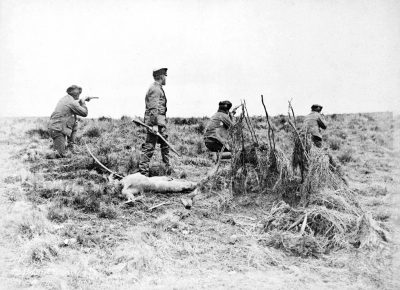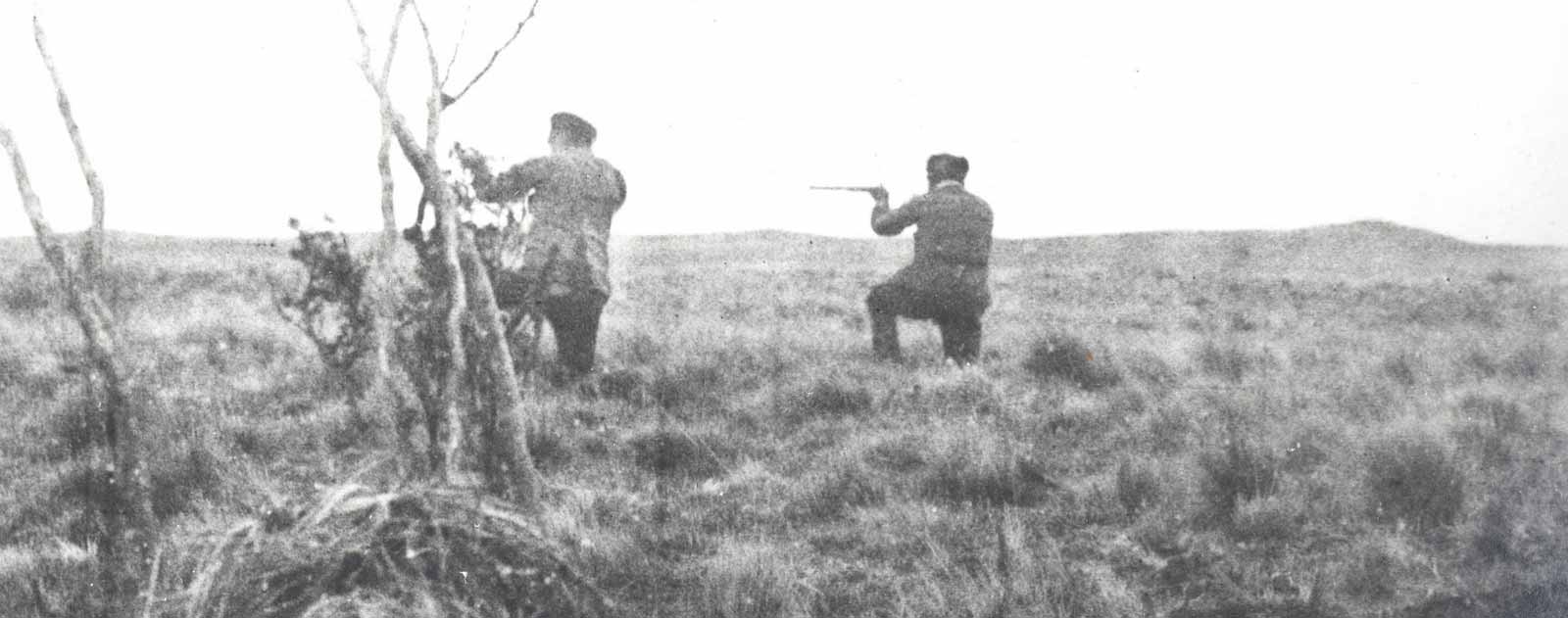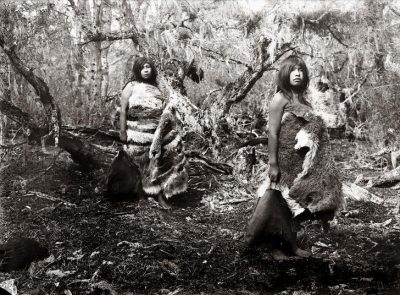Source:ABC
During the cattle exploitation in Tierra del Fuego, an extermination campaign began against the Selknam tribe in which mercenary activity was generously rewarded
During the “colonization” of Isla Grande Tierra del Fuego between the 19th and 20th centuries, one of the most atrocious genocides in Hispanic-American history was perpetrated. The cruelty of the invaders would begin during the gold rush, whose gold mines attracted Europeans. However, once the natural reserves stopped satisfying the greed of the intruders, they would start the exploitation of sheep farming; severely affecting the subsistence methods of the aborigines of the region.
The Sociedad Explotadora de Tierra del Fuego (Society for the Exploitation of the Land of Fuego) would initiate a campaign of extermination against the Amerindians, who in an attempt to survive the famines –caused by the settlers themselves- tried to steal the random sheep (white guanaco). To make matters worse, the cruelty of the invaders had been fueled by the English newspaper “The Daily News”, through which the inconvenience that the Selknam tribe posed for their enterprise aspirations was emphasized.
The English newspaper ‘The Daily News’ in 1872 reproduced the following lines about Tierra del Fuego: ‘Undoubtedly the region has presented itself very suitable for cattle breeding; although it offers as its only drawback the manifest need to exterminate the Fuegians’, the historian René Peri Fagerstrom collects in his work “Review of the colonization of Chile”.
Eight pounds per head
“Where are the strong men, the women with a gallant and beautiful presence, the joyful youth? … Where are the girls who were looking for shellfish on the beach and the young men who were trained in the handling of the bow?” Where are the hunters and their families? They perished! … They are stunned! … But this work of desolation was not consummated by the plague or the war, but by the friction with the Chilean whites (backed by the British press) and the greed of the civilized people” denounced the priest and ethnologist Martín Gusinde, in his treatise “Primitive Men in Tierra del Fuego”.
Malnutrition and the lack of military resources to resist lynchings ended up putting an end to a civilization.
The sick ambition that characterized the colonization of Tierra del Fuego, led the human being to commit the most ruthless acts against the aboriginal tribes. Once the foreigners depleted the resources of the gold deposits during the gold rush, the Chilean Government would motivate the cattle activity right there.

Julius Popper during one of his Indian hunts. A naked aboriginal, murdered by his militiamen, at Popper’s feet.
The fairly new Chilean State began to provide millions of hectares on this island for sheep farming; thus giving rise to a cooperative called “Sociedad Explotadora de Tierra del Fuego” (owned by the Spaniard Jose Menéndez). From 1893 they would initiate hostilities against the natives, becoming a true holocaust, in which neither God nor justice were with them.
“The Indian hunters killed because they paid a pound sterling for each head, and the woman had her breasts cut off and paid a little more for her”
Some historians subtract the negative impact, attributing the extinction of the Selknams to diseases, which also penetrated with the evil of the colonists. But the truth is that for more than two decades they carried out terrifying Indians huntings. It had become the “alternative business” to herding, for those mercenaries who did not have sheep or hectares granted by the Chilean State.
“The acquisition by force and the use of the land, invaded and occupied by the civilized people, deprived the Indians of all means of subsistence. The helpless and timid Indian was thrown from his land, over which he had the legitimate titles since times of the Spanish Empire, granted solely by occupation and never before disputed. And if the poor thrown-out fled to take refuge elsewhere, certain death awaited him from the bullet of the whites”, explained Martín Gusinde.
The reason why the massacre broke out was due to the same requests from the ranchers of the Sociedad Explotadora de Tierra del Fuego, who, uncomfortable with the theft of sheep, decided to eradicate all indigenous people. However, the Fuegians did not steal those “white guanacos” (as they called the sheep) due to subhuman instincts, but because of the famines that the businessmen were causing by eliminating their main source of livelihood, the guanaco.
Malnutrition and the lack of military resources to resist lynchings ended up putting an end to a civilization. Ranchers offered generous wages for committing these crimes. Up to 1 pound per head was paid; and from which they took great advantage because of the high demand for the National Museum of London. The institution offered up to 8 pounds for them.
“The Indian hunters killed because they paid them a pound sterling for each head, and they cut off the woman’s breasts so that they could show proof that she was a woman and then they paid a little more for her: a pound and a half or something like that … They said that the women would produce sons and these when grown up, would also be thieves out of necessity, due to hunger; it was very difficult for them to kill guanacos with the arrow, not like the carbine nowadays. The guanacos did not follow the movement of people, they went far away … “, wrote Francisco Coloane in his work “The white guanaco”.
The terrified indigenous people undertook an exodus to the North, hoping to avoid becoming cannon fodder, however as Coloane stated: “They risked the extermination that the cattlemen, both in Chile and Argentina, had implemented following the recommendation of ‘The Daily News’“.
“The greed and inhumanity of the civilized man reached such a low level that the heads of the Indians were very often an article of commerce since the intermediary merchant paid the murderer a pound sterling and he later sold the skull to the Museum of London for four pounds… splendid earnings in round numbers”, denounced Gusinde.
Share this article
On This Day
No Events
History of Spain
26 August 2020
27 January 2021
Communism: Now and Then
23 December 2022
28 July 2021







